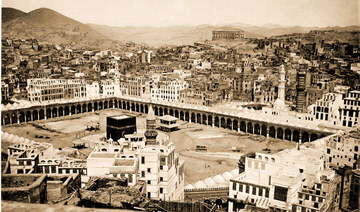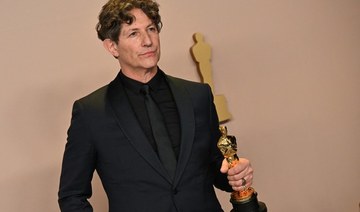LONDON: A treasure trove of historical photographs and postcards reflecting the rich social and cultural diversity of the Islamic world is currently on show in London in an exhibition organized by the Barakat Trust and Asia House. The amazing images in “Departures: A Photographic Journey through the Islamic World” range from the middle of the 19th century to the middle of the 20th, and were collected over 40 years by Jeddah-based historian Tarik Alireza. They capture scenes that are unlikely ever to be encountered again, so rapidly has the world they represent changed over the past century.
Particularly poignant are the images of places in Syria which have been either totally destroyed or severely damaged by the ongoing conflict there.
Arab News spoke to Richard Wilding, who co-curated the exhibition with Alireza, to learn more about the 500 images on show — narrowed down from the 15,000 in the archive.
Wilding, a photographer and filmmaker documenting identity, heritage, archaeology and costume in the Middle East, who has worked in Saudi Arabia since 2003, says that “Departures” showcases a great legacy that, in many cases, has been forgotten or neglected.
“I am conscious above all of the way in which the Islamic world has been flattened over the past 100 years,” he tells Arab News. “This great richness of diversity and culture has been forgotten both in the West and also, sadly, at home. A new generation has grown up that doesn’t really know their own history and culture. I find that tragic.”
He continues: “I think that the West is preoccupied with certain stereotypes of the Islamic world. We are fed a steady diet of stories and images of war, sectarianism, terrorism and extremism. That leaves very little room for any other stories — stories about culture and heritage and people leading fairly normal lives. There is no room for this, and in the respective countries themselves there have been too many distractions. A rapid modernity has taken place; Saudi Arabia, since the discovery of oil, has changed beyond recognition and the young generation has grown up with their eyes more on the West in terms of the things they take inspiration from. I find myself having conversations with people of my age or younger in Saudi Arabia who have never even heard of, let alone visited, many of the wonderful places I have traveled to, such as Asir.
“Even in Jeddah itself, you have Al-Balad, but many people living in the city never go to see it. Because is associated with being run down, it has been avoided rather than celebrated, though thankfully that is changing — there have been some very positive initiatives.”
Wilding says he spent 500 hours painstakingly retouching the photographs shown in the exhibition. This work was necessary to remove scratches and dust visible when they were enlarged. The images were all scanned in Jeddah with the generous support of the Abdul Jawad family who paid for the digitization.
“The images show a great diversity of cultures — there is not a single Islamic culture; there are multiple cultures and forms of architecture and costume. One of the beautiful things about them is that you can identify immediately where each was taken, whereas now of course you can’t. People wear the same uniform of jeans and trainers.”
The majority of the photographs were taken by European photographers, Wilding explains. “It’s very much outsiders — these are not people documenting their own society or culture,” he says. “At the time, these were the people with access to the equipment and the publishers. So to some extent you are looking at an Orientalist approach to the photography. It is very much catering to European tastes for the exotic. But it’s better to have this than to have nothing documented. It’s not perfect — but what is perfect?”
And to counter this, he adds, there is an element of the exhibition that features contemporary photographs taken by nationals within their own countries — capturing the everyday lives around them.
“Many are taken by amateur photographers on their iPhones. These are selected from Instagram from a range of locations including Pakistan, India, North Africa and Saudi Arabia. There are some really wonderful pictures,” Wilding says.
The names of the contemporary photographers are shown but the historic photographs are largely anonymous.
“The photographer is rarely credited, which — as a photographer myself — I find very difficult,” Wilding says. “Quite often, the backs of the photographs are completely blank with no information at all — at other times you have quite detailed information. Some of the images are hand-colored — this work was done by specialist studios. The colors are very beautiful. They were reproduced on a huge scale and reprinted over many years. A photo that might have been taken in 1890 was still being published by a postcard printer in 1920. It makes dating them quite difficult as you quite often find that the date on the postcard is not the date of when the actual photo was taken, which might have been 20 years earlier.”
Completely covering one wall of the exhibition is a huge map; an illustration of the Islamic world as it was in the middle of the 19th century.
“At the time, the Islamic world stretched from Morocco in the West to China and Indonesia in the East, and from the Balkans in the North down to Zanzibar in the South,” says Wilding. “We have overlaid some images on top of the map in their respective locations. We chose a range of images showing costumes from Uzbekistan, North Africa, Yemen, Albania, Turkey and Northern Iraq. We show images that illustrate the Silk Road, such as the camel caravans moving between China and Afghanistan. And we have mosques built in a huge variety of architectural styles.
“This map is a way of recognizing that the Muslim culture is valued,” he adds.
Wilding says he hopes the exhibition will go on tour, once it finishes its run in London on May 3. Some may think it odd that a non-Muslim should be so passionate about this archive of the Islamic world. But, for Wilding, it is no mystery.
“I get asked a lot why I am promoting this heritage. And I always say that you don’t have to be something to value it. As an outsider working in countries such as Saudi Arabia and Iraq I have a different angle,” he says. “The fact that I am not Muslim doesn’t in any way diminish the love I have for the history and the culture and the tremendous gifts it has given to the rest of the world which are largely forgotten.”
Images of Syria’s destroyed heritage revealed in London exhibition that ‘journeys through Islamic world’
Images of Syria’s destroyed heritage revealed in London exhibition that ‘journeys through Islamic world’
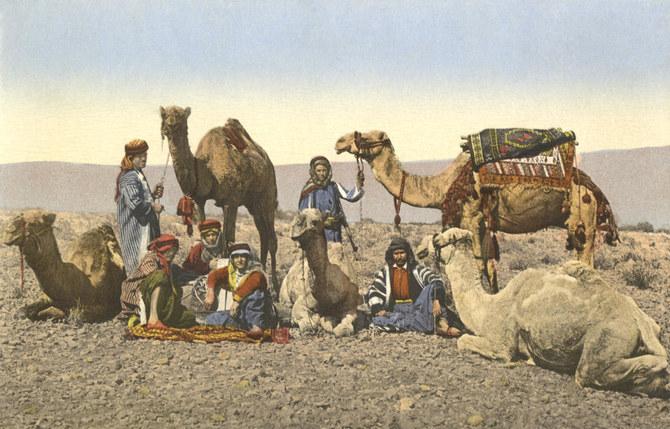
- A new exhibition in London explores the heritage and history of the Middle East
- Co-curator Richard Wilding says he spent 500 hours painstakingly retouching the photographs shown in the exhibition
Heba Ismail brings Saudi representation to NFT ecosystem
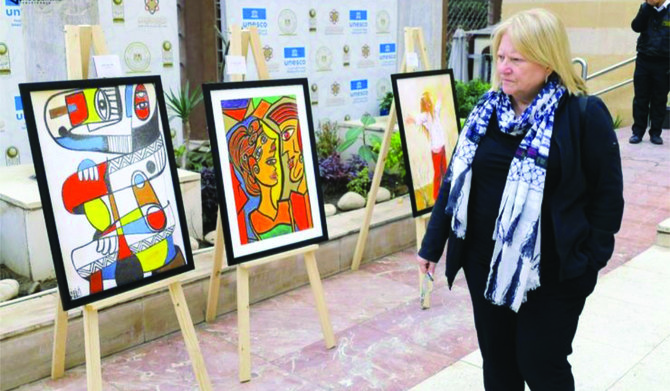
- Heba Ismail is highlighting ways for artists to flourish in the digital world
JEDDAH: Saudi artist Heba Ismail showcased her work at the Outer Edge Innovation Summit in Riyadh this week.
Commenting on her experience at the summit as one of the first Saudi artists to venture into the Web3 art scene, she said: “Having my paintings displayed on the event screens is a tremendous honor, offering global visibility and inspiring more Saudi and Arab artists to explore the diverse options available for sharing their art with the world.
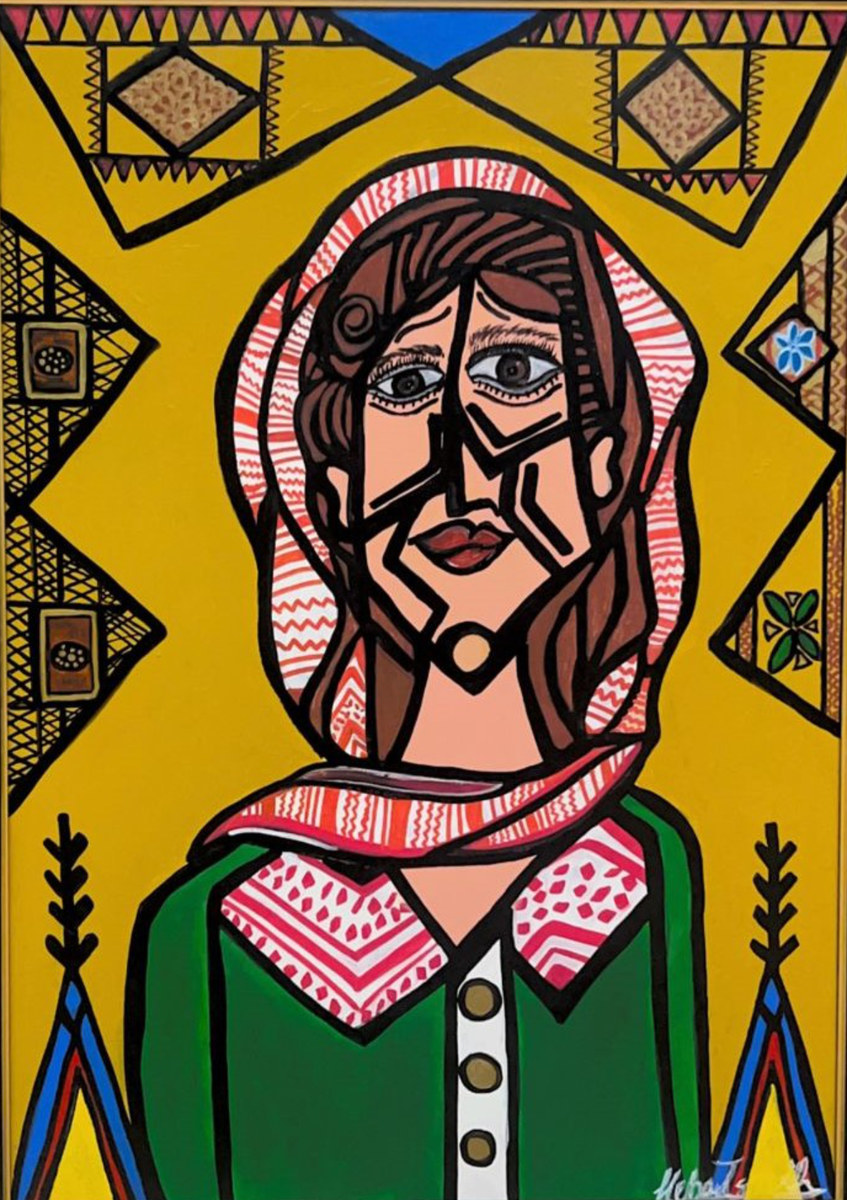
“Through my participation with Nuqtah, the first Saudi NFT platform, I am eager to present my art on a global stage and connect with audiences in innovative ways,” she continued.
Non-fungible tokens — or NFTs — are, in this scenario, digital tokens that can be redeemed for a digital art work. Ismail is exploring their potential in the Saudi art scene.
HIGHLIGHTS
• With a professional background in dentistry, Heba Ismail found parallels between that meticulous work and her own creative process.
• Partnering with ChainVisory, a blockchain consultancy company, Ismail launched the Hebaism brand.
• It combines NFTs and original paintings, providing collectors with both digital and physical assets.
For Ismail, art has always been more than just a hobby — it’s been a lifelong calling. With a professional background in dentistry, Ismail found parallels between that meticulous work and her own creative process.
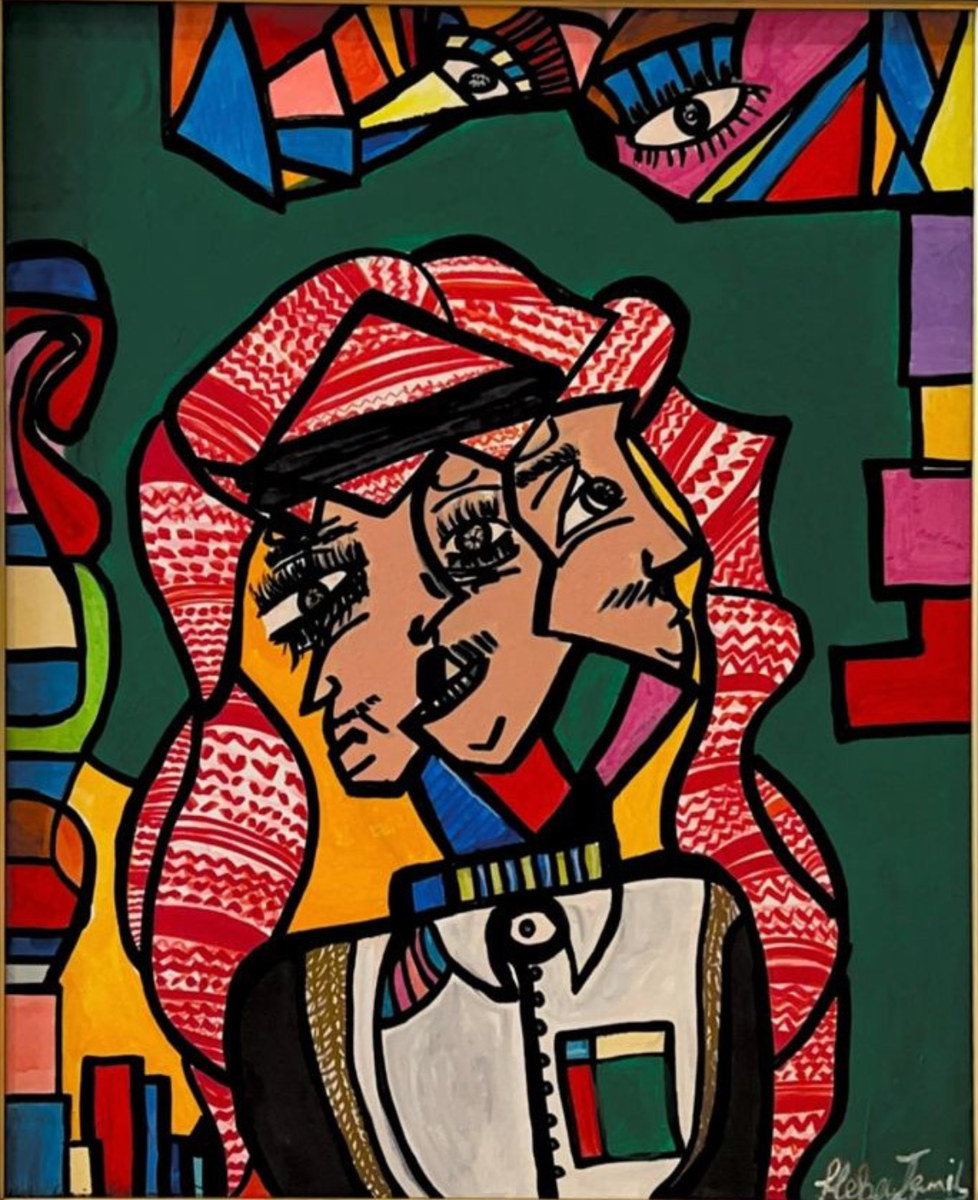
Inspired by movements including cubism, fauvism, and surrealism, Ismail’s art is a fusion of diverse influences and personal narratives “Each face represents a feeling and a vision documented on a painting. I paint poetry, and often times each piece is accompanied by a poem,” she said. “As a Saudi female, most of my paintings represent myself and my Saudi culture, which I am proud of. The characters are coded feelings, faces that tell a story — either joy, sadness, or acrimony.”

Her introduction to NFTs came in 2021, sparking a fascination with the technology and its potential. Partnering with ChainVisory, a blockchain consultancy company, Ismail launched her Hebaism brand, which combines NFTs and original paintings, providing collectors with both digital and physical assets.
As a female Saudi artist, I want to leave a mark and impact on every art platform, putting Saudi art on the map worldwide.
Heba Ismail, Saudi artist
“I wanted to keep the authentic classical painting process, yet the NFT world gave me a chance to meet and discover different ways to share my art and build a name and a brand,” she said. “It’s been an enlightening journey, uncovering the futuristic art process and connecting with a vibrant community through Web3.”
Ismail hopes to inspire other artists in the region to explore new avenues for artistic expression.
“As a female Saudi artist, I want to leave a mark and impact on every art platform, putting Saudi art on the map worldwide,” she said.
‘Bridgerton’ actress says she was warned not to campaign for Palestinians

- Nicola Coughlan: Hollywood insiders told her advocacy could harm her career
- Irish star feels ‘moral responsibility’ to campaign for ceasefire, continue to fundraise
LONDON: Irish actress Nicola Coughlan has revealed that she was told her Palestinian advocacy could harm her career.
The “Bridgerton” and “Derry Girls” star told Teen Vogue she had been warned by people in Hollywood not to be openly supportive of Palestinian rights, but has continued to campaign for a ceasefire in Gaza and still publicly wears an Artists4Ceasefire pin.
“You do get told, ‘you won’t get work, you won’t do this,’ but I also think, deep down, if you know that you’re coming from a place of ‘I don’t want any innocent people to suffer,’ then I’m not worried about people’s reactions,” she said.
“My family lived in Jerusalem back in the late ‘70s, early ’80s, before I was born, so I heard first hand stories about them living there.”
She said her father, who served in the Irish military, went to a “lot of war-torn regions after the conflict and try and help rebuild,” and this had left a profound impression on her.
“I’m so lucky I’ve gotten to this point in my career, and I’m privileged as a white woman, first off.
“Then the fact that I get to do the job I love and travel the world and meet amazing people, I feel a moral responsibility to give back.”
She has made a point of continuing to campaign and raise money around the issue, adding: “To me, it always becomes about supporting all innocent people, which sounds oversimplified, but I think you’ve got to look at situations and just think, ‘Are we supporting innocent people no matter where they’re from, who they are?’ That’s my drive.”
Coughlan said social media plays a role in driving advocacy but it requires nuance. “More of us should be trying to understand how upsetting and traumatising this is for Jewish people, and how horrific it is that all these innocent people in Palestine are being murdered,” she added.
A number of Hollywood figures have faced repercussions for their open support of the Palestinians or criticism of Israel.
Mexican actress Melissa Barrera was fired from the latest “Scream” film over social media posts in support of Palestine, while director Jonathan Glazer caused controversy for using his acceptance speech at the Oscars for his film “The Zone of Interest” to criticize the Gaza war.
Saudi Film ‘Hajjan’ wins 6 nominations at Critics Awards for Arab Films
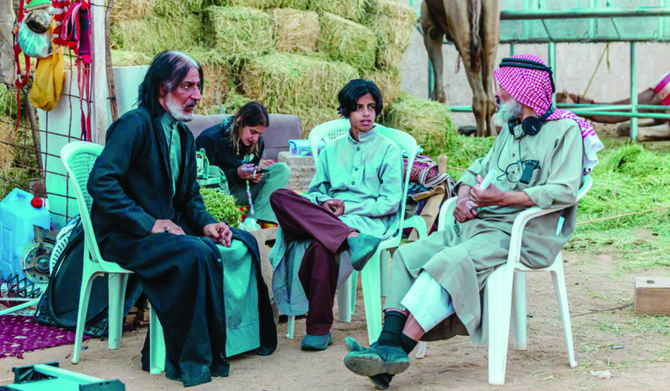
DUBAI: Saudi Arabia-based film “Hajjan,” directed by Egyptian filmmaker Abu Bakr Shawky, is nominated for six categories at the eighth Critics Awards for Arab Films.
The movie is competing in the best feature film, best screenplay, best actor, best music, best cinematography and best editing categories.
“Hajjan” tells the story of Matar, a boy who embarks on a journey across the desert with his camel, Hofira.
The movie is a co-production between the Kingdom’s King Abdulaziz Center for World Culture, or Ithra, and Egyptian producer Mohamed Hefzy’s Film Clinic.
The movie, which is written by Omar Shama from Egypt and the Kingdom’s Mufarrij Almajfel, stars Saudi actors Abdulmohsen Al-Nemer, Ibrahim Al-Hsawi, among others.
The awards ceremony, scheduled for May 18 on the sidelines of the Cannes Film Festival, is organized by the Arab Cinema Center in Cairo and assessed by a panel of 209 critics representing 72 countries.
Sudanese director Mohamed Kordofani’s inaugural feature film, “Goodbye Julia,” and Tunisian filmmaker Kaouther Ben Hania’s Oscar-nominated documentary, “Four Daughters,” scored nominations in seven categories.
Jordanian filmmaker Amjad Al-Rasheed’s “Inshallah A Boy” and Palestinian-British director Farah Nabulsi’s “The Teacher” have six nominations.
REVIEW: Sofia Boutella’s heroic efforts can’t save ‘Rebel Moon — Part Two’
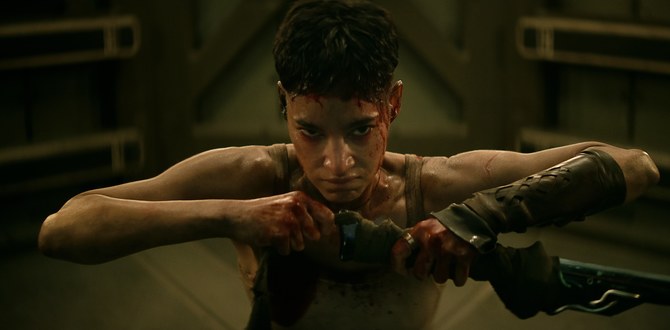
DUBAI: “Rebel Moon — Part One: A Child of Fire” drew scathing reviews (our writer described it as perhaps “the most discombobulating collection of mismatched sci-fi tropes ever committed to film”). “Part Two: The Scargiver” simply adds to that legacy.
The story: Former Imperium soldier Kora and the surviving band of ragtag warriors she’s recruited return to the moon of Veldt — home to simple farming folk in danger of being blown to bits by the mighty Imperium for failing to supply the unreasonable grain quota demanded of them. With just a few days before the deadline, Kora and her band must train the villagers to fight (and harvest the grain in just three days to provide a bargaining chip). What Kora doesn’t know is that Admiral Noble, the bad guy she ‘killed,’ is still alive. And bent on vengeance.
Before the enemy arrives, the warriors tell their life stories in a trust-building exercise — one of the clunkiest pieces of exposition ever written. There are slow-mo shots of the harvest gathering and a brief interlude to show that Kora and farmer Gunnar are very much in love.
Then, thankfully, we’re into the battle(s). Here, at least, director Zack Snyder doesn’t disappoint, even giving an original twist to the ‘spaceship plummeting from the sky’ trope by staging a showdown between Kora, Gunnar and Admiral Noble on a floor that becomes increasingly vertical. Below them, the villagers fight heroically against odds very much stacked against them, even with the help of Nemesis and her two flaming definitely-not-lightsabers.
The well-constructed battle scenes, though, aren’t enough. Not even with a cast fighting as heroically as the villagers to salvage something. Sofia Boutella, as Kora, emerges with most credit, proving herself a convincing action hero who deserves better than this material to work with (spoiler alert: perhaps even material that allows the heroine to kill the bad guy herself, without the intervention of her boyfriend).
Yes, no one’s sitting down to watch an “epic space opera” in the expectation of thought-provoking dialogue, but “Rebel Moon” is like the result of forcing a seven-year-old to watch all things “Star Wars” and “Star Trek” in random order, then asking them to write down what happened. The best thing to say about “The Scargiver” is that it finishes — but even that comfort is tainted by Snyder’s cynical setting up of a potential part three. Possibly because that seven-year-old fell asleep before writing an actual ending.
Saudi Arabian history on display at Abu Dhabi Book Fair
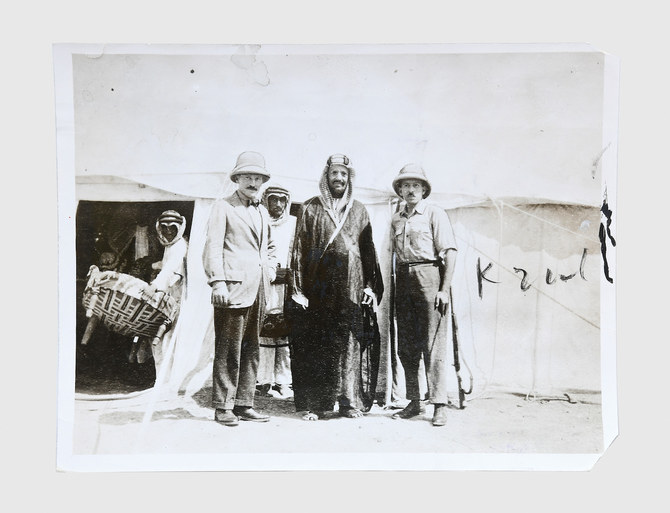
- Selections from London-based rare-book dealer Peter Harrington’s offering at the UAE fair
‘Ibn Saud press photograph’

According to notes from rare books specialists from Peter Harrington’s team, this image from archives of The Times newspaper was taken in what was then called Hejaz, following a “critical and secretive meeting between (founder of Saudi Arabia) Ibn Saud (center) and the British representative Sir Gilbert Clayton (left) — one of a pivotal series of negotiations which led to the Treaty of Jeddah in May 1927.” The two discussed “various outstanding questions affecting the relations of the Kingdom of the Hejaz and Nejd with the neighboring states of Iraq and Transjordan” to help determine the northern borders of Saudi Arabia. “Discussions over the borders were protracted and complex, with the towns of Maʿan and Kaf the object of particularly intense debate,” the notes state.
‘Pilgrimage to El-Medinah and Mecca’ by Richard F. Burton
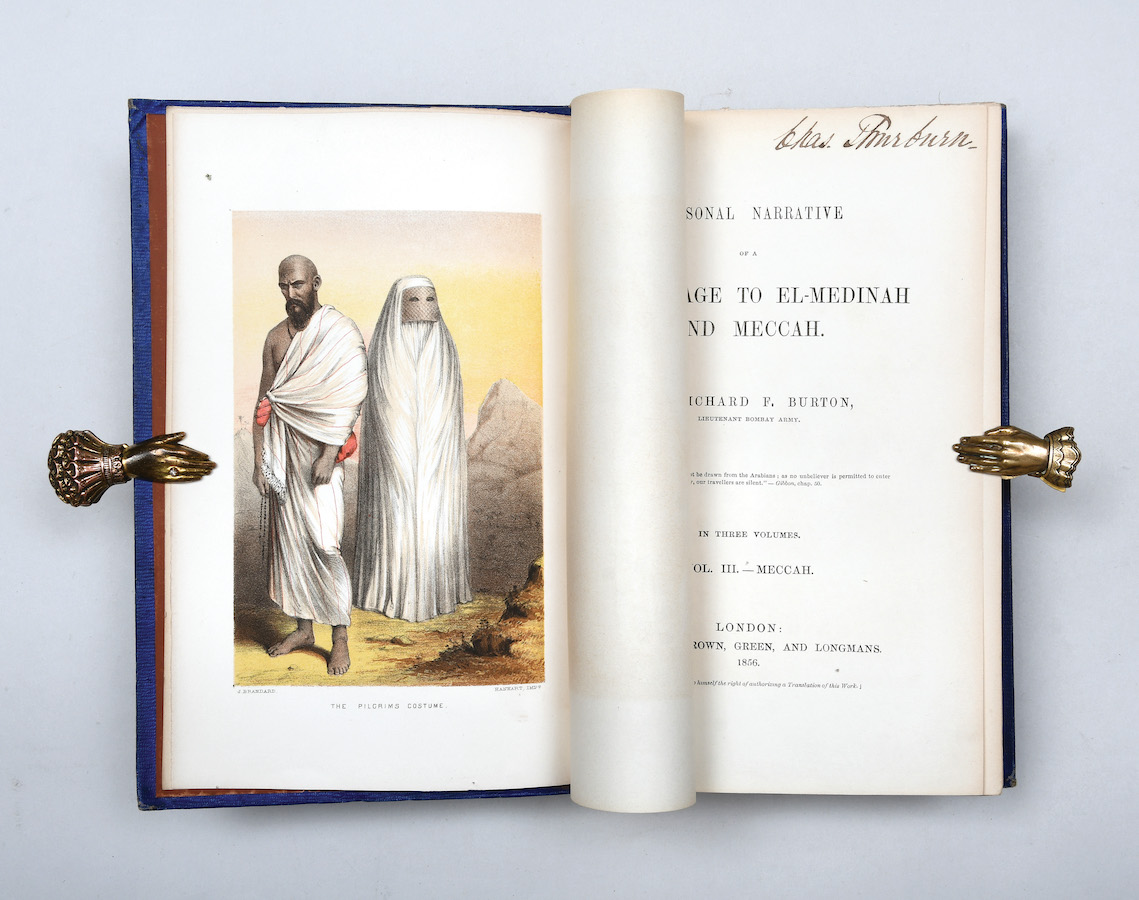
In this three-volume first edition, complete with illustrations, of “one of the most extraordinary travel narratives of the 19th century,” the British explorer, writer and polyglot Richard Francis Burton recounts his Hajj journey, made “in complete disguise as a Muslim native of the Middle East” at a time when fewer than half-a-dozen Europeans had made the pilgrimage — forbidden to non-Muslims. “It surpassed all preceding Western accounts of the holy cities of Islam, made Burton famous, and became a classic of travel literature, described by T. E. Lawrence as ‘a most remarkable work of the highest value,’” the team from Peter Harrington note. In Makkah, Burton performed all the rites of the pilgrimage and his subterfuge remained undiscovered.
‘Map and Overview Presenting the Hejaz Railway Route’

This map from 1903 depicts the route of the ambitious Hejaz Railway project. It “depicts a very broad area, extending from just north of Hama, Syria, all the way south a little way past Makkah, in the Hejaz; it covers most of Syria, all of Palestine, the Sinai Peninsula, the Suez Canal, and all the north-western Arabian Peninsula,” Peter Harrington’s rare book experts write. “It clearly delineates those parts of the railway that are in place and those under construction … with each station labelled. Additionally, it depicts the two alternative routes proposed for extending the line to Makkah, employing broken lines, while another line traces the proposed (but unrealized) route of a rail line from Makkah to Jeddah. The map also labels important roads and caravan routes.”
Four years after this map was published, the book seller’s notes state, the railway reached AlUla, which is not marked on this map, although Mada’in Salah (now Hegra) is, which today is the site of one of two museums dedicated to the Hejaz Railway.
By 1908, the railway had reached Madinah, where, the notes state, “for various political reasons, it had to be terminated.” Nevertheless, they continue, “until the outbreak of the First World War, it allowed hundreds of thousands of pilgrims to make the Hajj in safety and with relative ease.”
‘Material from the library of Peter O’Toole by T.E. Lawrence’
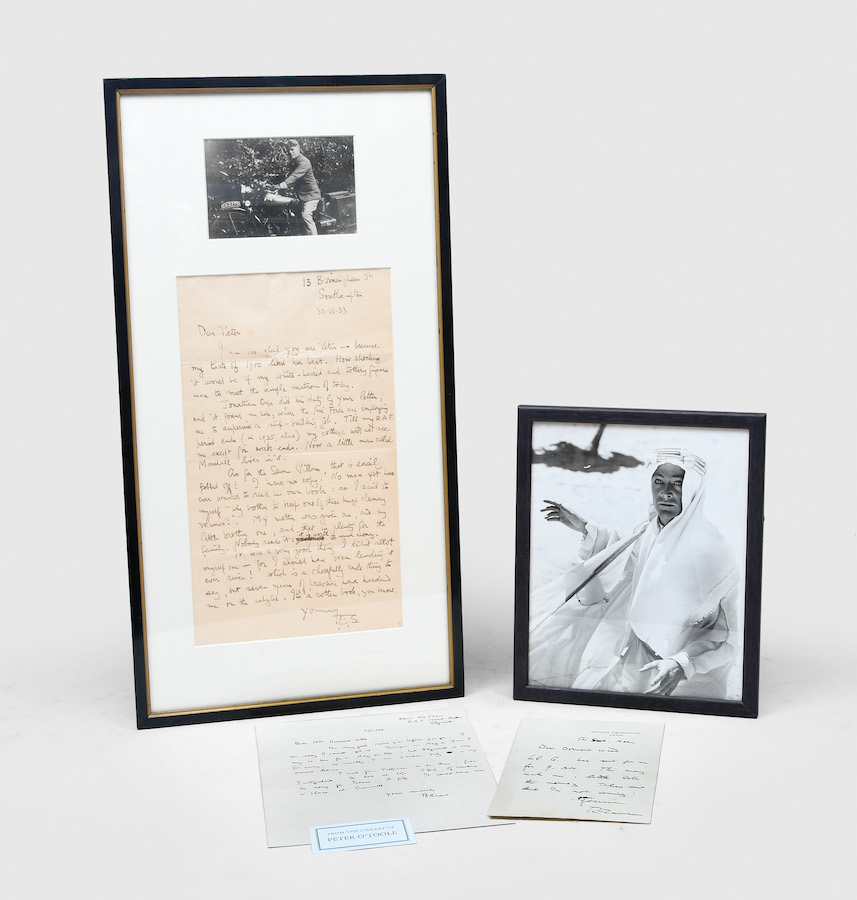
Billed by Peter Harrington as an “insightful archive, spanning Lawrence’s transformation from man of the moment to unwilling celebrity, from the library of Peter O’Toole, whose breakthrough portrayal in David Lean’s 1962 biopic still shapes perceptions of the famous Arabist. Autograph material from Lawrence is always highly prized, but rarely is its provenance so apposite.”
The centerpiece of the material is a photograph and an unpublished letter written by Lawrence (who became known as Lawrence of Arabia following his journeys across the Middle East, including modern-day Saudi Arabia), framed as a piece and gifted to the English actor who played Lawrence in the aforementioned biopic by his wife, Sian, and a friend not long before the premiere of the movie. The letter makes clear Lawrence’s difficult relationship with his celebrity, and is cutting about his own book, “The Seven Pillars of Wisdom,” saying that he did not own a copy himself (“No man yet has ever wanted to read his own book”) but that his mother and “little brother” did, “and that is plenty for the family. Nobody reads it: it is worth too much money. ... It is a rotten book, you know.”
‘Oil Region in the Desert of Saudi Arabia’
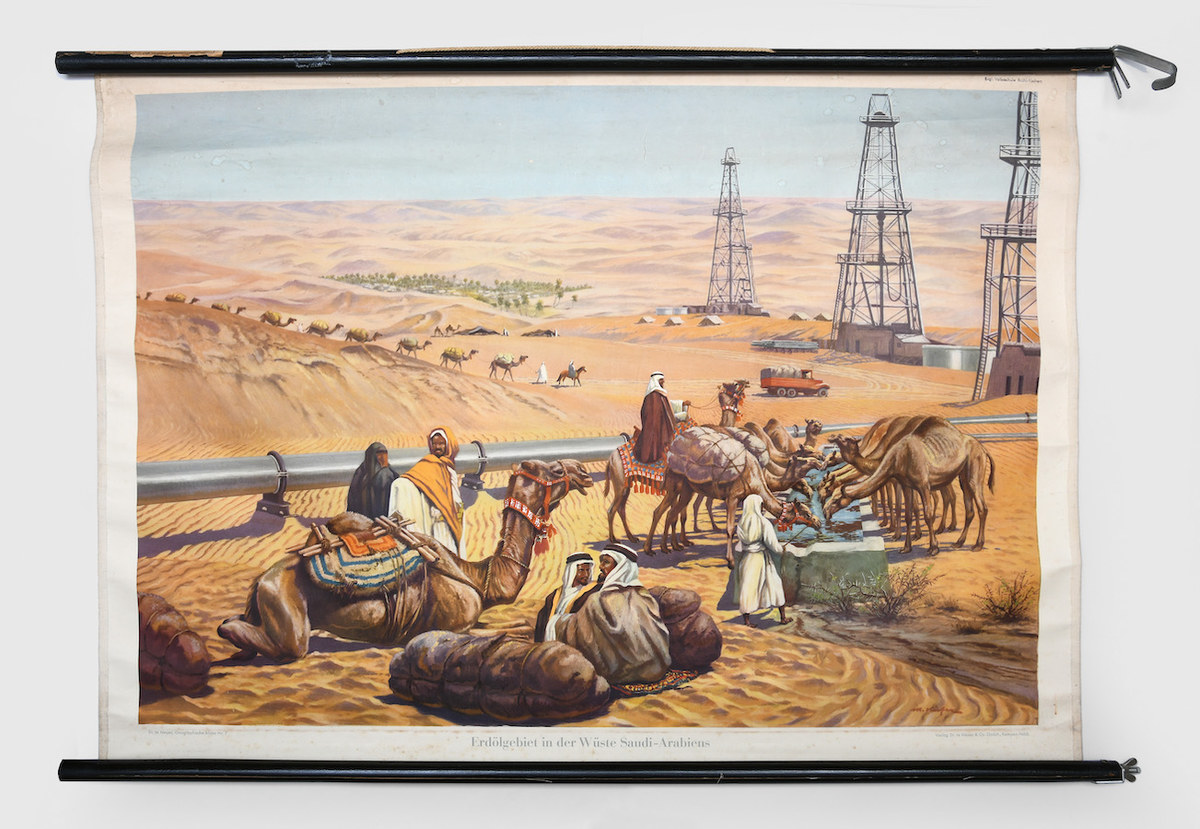
This 1950 image, “after a painting by the German artist Michael Mathias Kiefer,” is one of a series of geographical pictures intended for use in the curriculum of German schools. “The painting juxtaposes Arab figures in traditional garb with images of drilling rigs, a lorry, and oil storage tanks, creating a strikingly orientalist image,” Peter Harrington’s notes state. “In the middle of the composition, a pipeline bisects the image, a forceful reminder of the centrality of oil to the modern Saudi Arabian economy. In the foreground, members of a group of travelers, possibly intended to be Bedouins, rest on a carpet and let their camels drink from a water tank. Away in the background, before a distant oasis, more travelers arrive at a campsite, their camels heavily laden. Their destination is the oil infrastructure that crowds the right of the image.”






